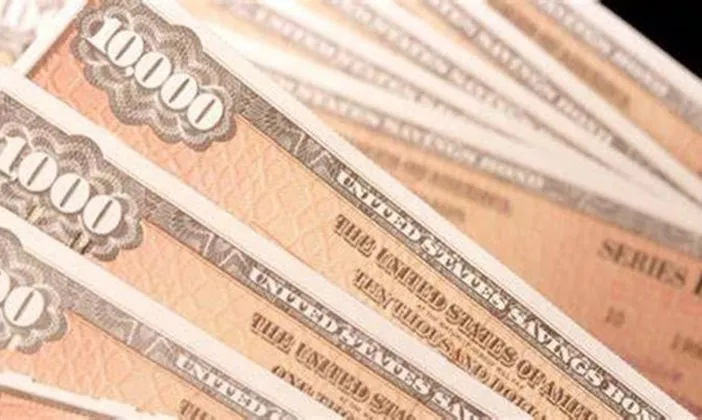U.S. savings bonds are a secure and straightforward investment option backed by the U.S. government. Whether you’ve received one as a gift or purchased one yourself, knowing how to redeem it is essential. This guide provides a comprehensive, step-by-step approach to cashing your U.S. savings bond, covering both paper and electronic bonds, and addressing various scenarios you might encounter.
Understanding U.S. Savings Bonds
U.S. savings bonds are debt securities issued by the U.S. Department of the Treasury. They are designed to be a low-risk investment, offering a fixed interest rate over a specified period. There are two main types of savings bonds:
- Series EE Bonds: Issued since 1980, these bonds earn a fixed interest rate and are guaranteed to double in value if held for 20 years.
- Series I Bonds: Introduced in 1998, these bonds offer a combination of a fixed rate and an inflation-adjusted rate, providing protection against inflation.
Both types of bonds are exempt from state and local taxes, and the interest is subject to federal tax. However, if the bonds are used for qualified educational expenses, the interest may be tax-free under certain conditions.
Eligibility for Cashing a Savings Bond
Before cashing your savings bond, ensure you meet the following criteria:
- Minimum Holding Period: You must hold the bond for at least one year before cashing it. If you cash it before five years, you will forfeit the last three months of interest earned.
- Ownership: You must be the registered owner or co-owner of the bond. If the bond is in a minor’s name, a parent or legal guardian may be able to cash it on their behalf.
- Identification: You will need valid identification to prove your identity when cashing the bond.
How to Cash a Paper Savings Bond
To redeem a paper savings bond, follow these steps:
- Visit a Bank or Credit Union: Take your paper bond to a financial institution where you have an account. Not all banks offer this service, so it’s advisable to call ahead and confirm.
- Provide Identification: Bring valid identification, such as a driver’s license or passport, to verify your identity.
- Complete the Redemption Process: The bank will verify your bond and identification, and upon approval, will cash the bond and deposit the funds into your account or provide you with a check.
If you do not have a bank account or prefer not to use a bank, you can redeem your paper bond by mail:
- Complete FS Form 1522: This form is used to request payment for a savings bond. It requires your personal information and the bond details.
- Mail the Form and Bond: Send the completed form and the original bond to the address specified on the form. It’s recommended to use certified mail for tracking purposes.
- Receive Payment: Upon processing, the Treasury will issue a check for the redemption amount.
How to Cash an Electronic Savings Bond
For electronic savings bonds, the redemption process is conducted online through the TreasuryDirect website:
- Log In to TreasuryDirect: Access your account at TreasuryDirect.gov using your credentials.
- Select the Bond: Navigate to the “ManageDirect” section and choose the bond you wish to redeem.
- Specify Payment Details: Indicate whether you want to redeem the bond partially or in full, and provide your bank account information for direct deposit.
- Submit the Request: Review the details and submit your redemption request. The funds will be deposited into your account.
Special Circumstances for Cashing a Savings Bond
There are various situations where the standard redemption process may not apply:
- Minor’s Bond: If the bond is in a minor’s name, a parent or legal guardian can cash it on their behalf, provided they have the necessary documentation.
- Estate Bonds: If the bondholder is deceased, the executor of the estate must complete the necessary forms and provide a certified death certificate to redeem the bond.
- Power of Attorney: If someone is acting on behalf of the bondholder under a power of attorney, they must present the original bond, the power of attorney document, and valid identification.
In these cases, it’s advisable to contact the TreasuryDirect customer service or visit a local bank for guidance on the proper procedures and required documentation.
Tax Implications of Cashing a Savings Bond
When you redeem a savings bond, the interest earned is subject to federal income tax. However, you can choose to report the interest in the year the bond is cashed or in the year it matures, whichever is more beneficial for your tax situation.
If you use the proceeds from the bond to pay for qualified higher education expenses, you may be eligible to exclude the interest from federal income tax. This exclusion applies to Series EE and I bonds issued after 1989, subject to income limits and other requirements.
Alternative Options for Managing U.S. Savings Bonds
If you prefer not to cash your savings bonds immediately, consider the following alternatives:
- Convert Paper Bonds to Electronic Form: You can convert paper bonds to electronic form through the TreasuryDirect website. This makes them easier to manage and eliminates the risk of loss or theft.
- Gift Bonds: U.S. savings bonds can be a thoughtful gift. You can purchase them through TreasuryDirect and transfer them to the recipient’s account.
- Use for Education: As mentioned, using the proceeds for qualified educational expenses can provide tax benefits.
Conclusion
Redeeming a U.S. savings bond is a straightforward process, whether you have a paper bond or an electronic one. By understanding the eligibility requirements, following the appropriate steps, and being aware of any special circumstances, you can efficiently manage your savings bond redemption. Always keep records of your transactions and consult with a tax professional if you have questions about the tax implications of cashing your bond.
Related topics:


